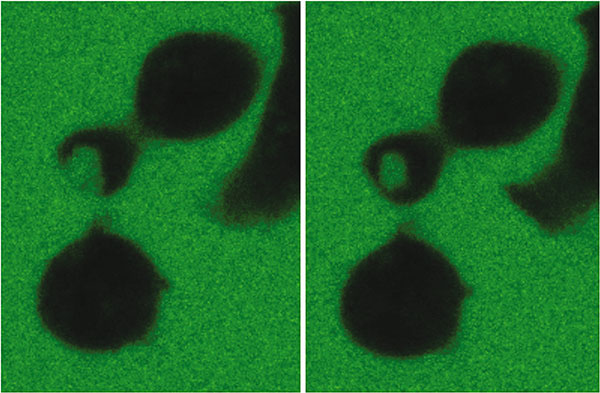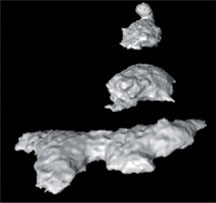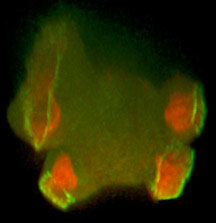

A new century, a new direction, found Rob switching to genomics and cell biology, with highlights being the Dictyosteliumgenome, discovery of the mating type locus and proof that chemotaxing cells are not steered by PIP3 gradients. His most recent passion is macropinocytosis – the ancient and conserved process of cell drinking through large cups extended from the plasma membrane. Dictyosteliumcells use macropinocytosis for feeding on liquid medium and Rob’s laboratory has identified key players that help shape polymerizing actin into cups. These include Ras, NF1, PI3-kinase and Akt, which are all more familiar in growth factor signalling, and as oncogenes or tumour suppressors. Rob would like to know more about macropinocytosis and what its uncanny overlap with growth-factor signalling means in evolutionary terms.



Selected Papers
- Lutton J. E., Coker H. L. E.., Paschke P., Munn C. J., King J. S., Bretschneider T., Kay R. R. (2023)
Formation and closure of macropinocytic cups in Dictyostelium
Current Biology 3: 1-14 - Nichols, J.M.E., Paschke, P., Peak-Chew, S., Williams, T.D., Tweedy, L. Skehel, M.,Stephens, E., Chubb, J. & Kay, R.R. (2019)
The atypical MAP kinase ErkB transmits distinct chemotactic signals through a core signalling module.
Dev. Cell. 48(4): 491-505. doi:10.1016/j.devcel.2018.12.001 - Veltman, D.M., Williams, T.D., Bloomfield, G., Chen, B-C., Betzig, E., Insall, R.H. & Kay, R.R. (2016)
A plasma membrane template for macropinocytic cups.
eLife 5: :e20085. - Bloomfield, G., Traynor, D., Sander, S. P., Veltman, D. M., Pachebat, J. A. and Kay, R. R. (2015)
Neurofibromin controls macropinocytosis and phagocytosis in Dictyostelium.
eLife 4: e04940. - Bloomfield, G., Skelton, J., Ivens, A., Tanaka, Y. and Kay, R.R. (2010)
Sex determination in the social amoeba Dictyostelium discoideum.
Science 330: 1533-1536. - Eichinger, L. et al. (2005)
The genome of the social amoeba Dictyostelium discoideum.
Nature 435: 43-57.